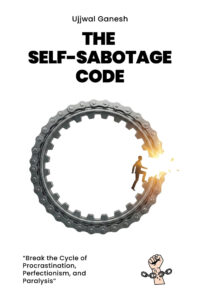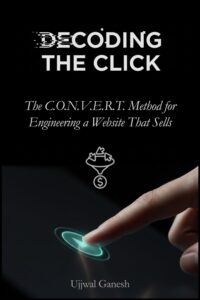For years, you’ve been told that “content is king.” You’ve invested in great articles, beautiful design, and expert authors. Yet, your site might still be invisible to Google. Why?
Because you’re operating on an outdated assumption. You think you’re publishing for humans. You’re not.
In 2025, you are publishing for a machine—and that machine doesn’t trust your brand, your credentials, or your beautiful prose. Google doesn’t trust you. It trusts what it can model.
This is the new reality of search in the AI era. Google’s ability to crawl, understand, and, most importantly, reuse your content in Al Overviews and snippets depends on a foundation of clean, predictable, structural signals. That foundation is Technical SEO. Neglecting it is like building a brilliant engine but forgetting to connect it to the wheels.
As a website strategist, I see businesses fail because they ignore this “invisible engine.” Let’s stop talking about what you write and start talking about how your website is built.
The Crawlability Crisis: If the Machine Can’t Read It, It Doesn’t Exist
Before Google’s AI can even consider your content, its basic crawlers have to find and parse it. Technical errors create broken patterns that cause the machine to fail.
- No Sitemap, No Roadmap: An XML sitemap is a direct instruction manual for Google, telling it where all your important pages are. Without it, you’re asking the crawler to find its way through your site blindfolded. A well-submitted sitemap can get your content indexed significantly faster, especially for new pages.
Robots.txt: The Do Not Enter Sign: A simple misconfiguration in yourrobots.txtfile, likeDisallow: /, is the digital equivalent of putting a “Keep Out” sign on your front door. It tells Google not to crawl your site at all.- Broken Links (404s): Broken links are dead ends in the pattern. They disrupt the crawler’s path and bleed your site’s authority, signaling a poorly maintained and untrustworthy structure.
The Language of Machines: Structure, Schema, and Speed
To trust your content, Google’s AI needs to understand it without ambiguity. This requires speaking its language.
- Structured Content is King: Clean, descriptive URLs and the proper use of canonical tags to resolve duplicate content are not just “best practices”; they are signals of consistency. A machine can model a pattern like
domain.com/services/technical-seofar more easily thandomain.com/p?id=789. - Schema as a Rosetta Stone: Structured data (like Schema.org markup) is how you explicitly explain your content to the machine. You’re not just telling Google your page has an FAQ; you’re handing it the FAQ in a perfectly formatted, pre-packaged model it can instantly reuse. This is why pages with effective schema can see a click-through rate increase of up to 30%—they are formatted for instant use in rich results.
- Speed as a Trust Signal: A fast, stable website is a predictable one. Google’s Core Web Vitals measure this user experience directly. A slow site with a poor LCP (loading) or INP (interactivity) score is an unreliable pattern, and Google will hesitate to send users there. The data is clear: as page load time goes from 1 to 5 seconds, the probability of a user bouncing increases by 90%. A fast site is a trustworthy site.
The Blueprint for Building Machine-Readable Trust
You don’t need to be a developer to build a website that Google’s AI can trust. Focus on these foundational principles.
- Run a Technical SEO Audit: You can’t fix what you can’t see. Use Google Search Console (it’s free) to check for crawl errors, Core Web Vitals scores, and mobile usability issues. Tools like Screaming Frog offer a deeper analysis.
- Build Your Roadmap (Sitemap &
robots.txt): Use a tool or plugin (like Yoast SEO for WordPress) to generate a dynamic XML sitemap. Submit it to Google Search Console. Then, check yourrobots.txtfile to ensure you are not accidentally blocking important pages. - Secure Your Foundation (HTTPS): In 2025, an unsecured “http://” site is a massive red flag. Most web hosts offer free SSL certificates. Activate yours and ensure all traffic is redirected to the secure HTTPS version.
- Speak the Language (Schema Markup): Implement basic schema on your pages. Use
Articleschema for blog posts,FAQPagefor Q&A sections, andOrganizationfor your business details. This provides the clear, model-ready data that AI Overviews are built on. - Deliver with Speed (Core Web Vitals): The simplest ways to improve your Core Web Vitals are to compress your images, use a modern web host, and implement caching. These three actions solve the majority of speed issues for small businesses.
Stop Publishing for Yesterday’s Google
The game has changed. Your content is no longer judged on words alone, but on the structural integrity of the vessel that holds it. Google’s AI doesn’t have time to interpret your messy, disorganized genius. It’s looking for clean, predictable patterns it can trust and reuse at scale.
By focusing on your technical foundation, you stop being just another voice in the noise. You become a trusted, structured source—a publisher that the machines, and in turn, your future customers, can rely on.













